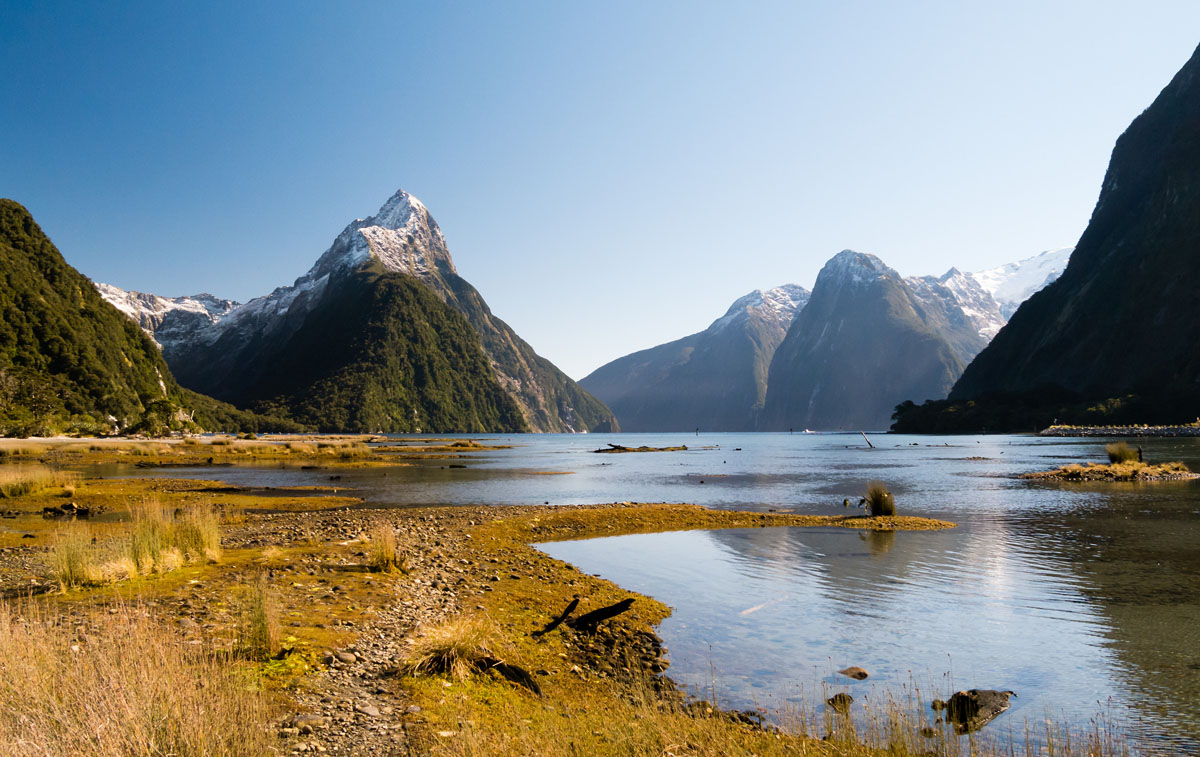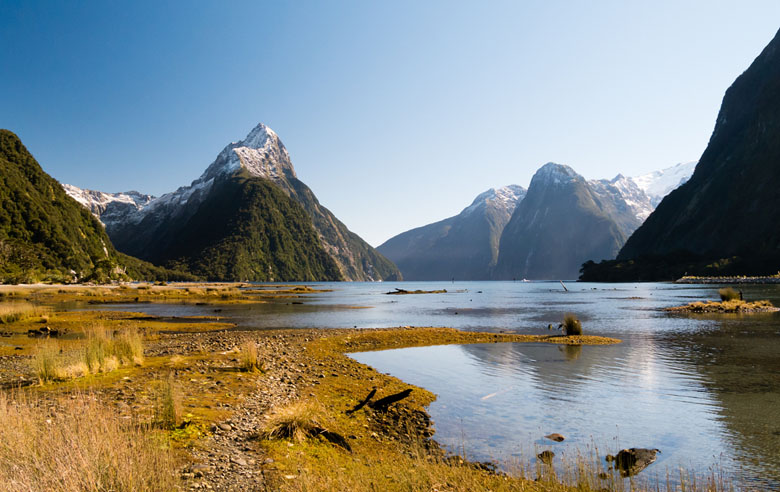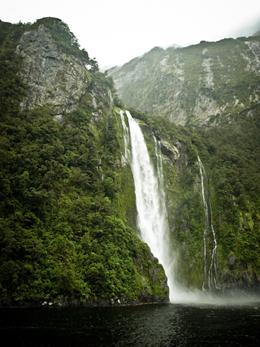

World-renowned Milford Sound is the pearl of New Zealand’s Fiordland National Park. The 15-kilometer length of mysterious dark waters is lined by 4,000-foot rock walls, the peaks of which remain snow-capped during all but the warmest summer months. Pockets of fog, rain, and sunshine move quickly through the area transforming its personality from one moment to the next. Milford Sound is pure New Zealand.
The Milford Sound area is isolated and accommodations are scarce—most tourists visit on a day trip from Queenstown (4–5 hours each way) or Te Anau (2 hours each way). This means that midday is the busiest and least pleasant time to be on the Sound. Staying in Te Anau, in addition to it too being a wonderful place, makes it easier to arrive early or stay late and avoid the crowds.
The most popular way to experience Milford Sound are the frequent boat cruises running the length of the sound out to the Tasman Sea. The two-hour long cruises are exceptionally fun—the boats have great viewing from the top deck and proceed slowly during the most scenic sections. The knowledgeable kiwi staff provides history and background and by the end of the trip you will feel familiar with Milford Sound’s many nooks and crannies. Families are welcome aboard.

For those interested in splashing around, kayaking trips are available and no prior experience is required. The choice options leave early, such as Rosco’s Sunriser, getting in a good chunk of kayaking time before the cruise boats are on the water. As the day progresses the wind tends to pick up and the conditions get choppy. For those with experience, the epic Morning Glory kayaking trip puts in at daybreak and paddles the full length of the sound before returning by water taxi.
Another Sound activity is the recently revamped Milford Discovery Centre & Underwater Observatory. The general verdict is that the centre isn’t mind-blowing but offers a nice look at the geology of the fiords as well as early exploration and tourism. The highlight is the viewing chamber that delves 10 meters under the surface level of the water for 360-degree views of the unique marine ecosystem. The dark waters of Milford Sound are home to rare black coral, usually reserved for ocean depths of 500 meters or more.
One of signature features of Milford Sound and the Fiordland region is the persistent rain. It is indeed one of the wettest places on earth, with an annual rainfall of almost 7,000 mm (23 feet), but once you’ve visited Fiordland it becomes difficult to imagine the surroundings without a drizzle. The rain feeds the old-growth rainforests and keeps the waterways vibrant, which carry a layer of fresh water up to 20 inches deep atop the salt-water base. Waterfalls abound, both temporary and permanent, with 500-foot Bowen Falls and Stirling Falls the most prominent.
On the way in and out make sure to properly soak up the drama of the legendary Milford Road. Simply put, this World Heritage section of State Highway 94 probably shouldn’t be there. Proof is in the Homer Tunnel, which took over 20 years to complete and in 1954 connected Milford Sound to the outside world. The tunnel’s 1,270 meters of unlined granite walls serve to remind us that we remain but humble visitors to this most magnificent corner of the world.